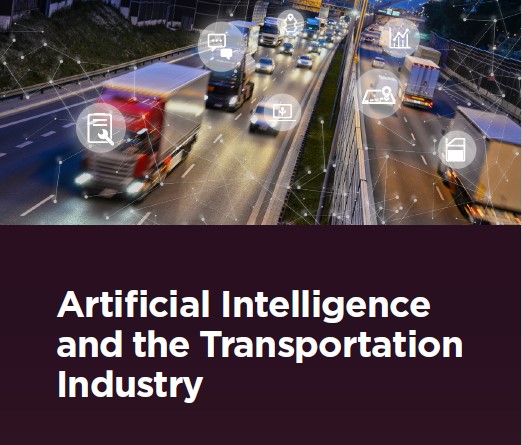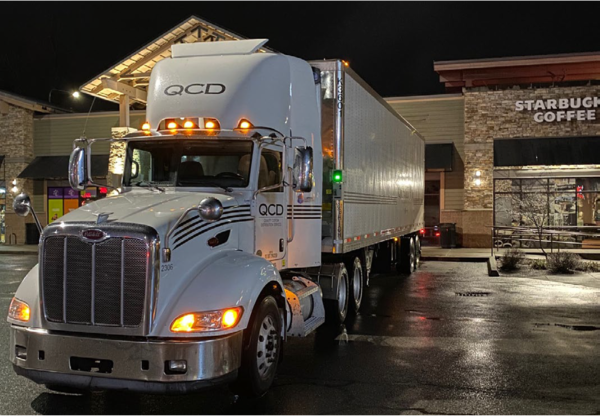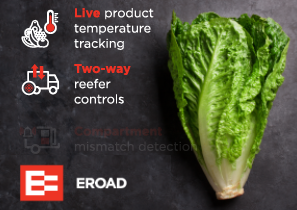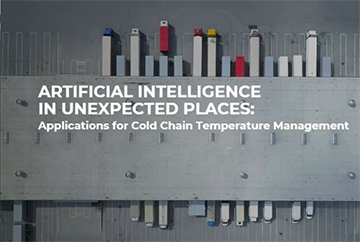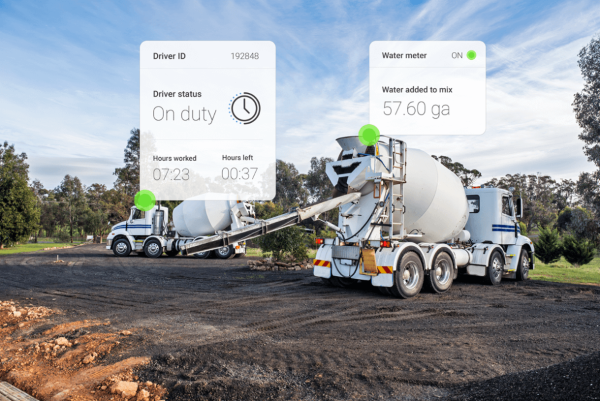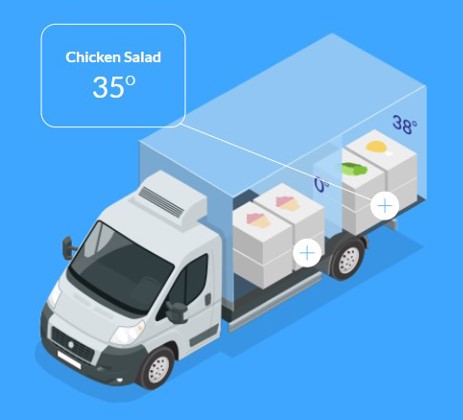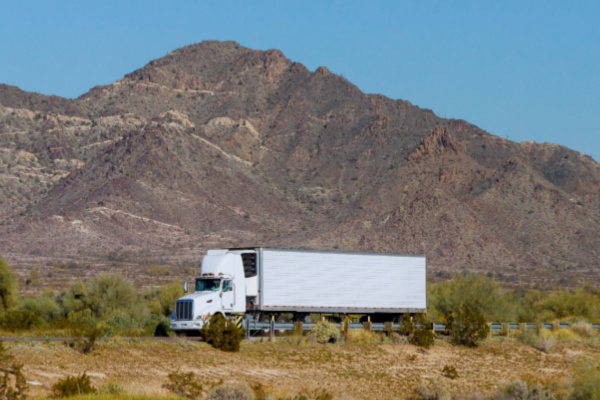Artificial Intelligence:
AI Applications for Transportation BusinessesArtificial intelligence has become a feature of everyday life. Using face ID to unlock a phone, communicating with customer service chatbots and letting “smart” appliances help manage our homes are just a few of the ways that we interact with AI on a regular basis. But what exactly is artificial intelligence? This guide provides an overview of what AI is, how it works and how it is helping transportation businesses transform their operations to boost efficiency, safety and profitability as they navigate an increasingly complex regulatory and businesses landscape.
What is Artificial Intelligence?
AI is technology designed to help people solve problems. What that means differs depending on who you ask. For some, it’s technology that enables computers and machines to function intelligently. For others, AI facilitates the ability of a machine to replace human labor to increase efficiency and precision. Others see it as a system that can interpret vast amounts of data to achieve specific goals.
At its core, AI is the simulation of human intelligence in machines, especially computer systems. AI systems enable machines to:
- Learn from data, experiences and interactions to improve their performance.
- Use data and logic to reach conclusions and make decisions.
- Sense and interpret the world through sensors, cameras, microphones and other inputs.
- Adapt to new data and changing environments to refine their abilities and improve performance.
AI has uses – and potential uses – across nearly all facets of life and industry, from virtual assistants and interactive video games to self-driving cars, automated manufacturing, medical applications and, of course, applications in the transportation and logistics industry.
How Does AI Work?
A variety of methods, techniques and approaches are used to enable machines to learn, think (i.e., make predictions) and perform tasks that typically require human intelligence. AI comprises complex systems that differ based on their intended uses; here are some basic components and processes that make AI possible:
Data collection: AI requires vast amounts of data to be able to learn and make decisions. Data sources can include user interactions, databases, the internet, sensors, cameras and more.
Data processing: Data often needs to be cleaned, organized and prepared for AI to function effectively. This could involve things like removing irrelevant information, handling missing values and formatting data.
Algorithms and learning models: Algorithms are mathematical instructions that enable AI systems to use data to learn patterns, make predictions and learn tasks. Machine learning enables systems to make predictions and decisions without specific programing. Deep learning uses artificial neural networks (a complex structure of algorithms) to enable AI to process unstructured data, such as documents, images, language and sounds.
Training: AI models are trained using large datasets and optimization techniques. During training, the model adjusts its parameters to minimize errors or differences between predicted and actual outcomes. This process continues until the model achieves an acceptable level of accuracy.
Feedback loops: AI systems can continuously learn and improve by receiving feedback on their predictions or actions. This feedback loop helps refine the models and adapt them to changing conditions or new data.
Monitoring systems: AI implementation requires ethical considerations, including bias mitigation, data privacy, and transparency. Monitoring AI systems is crucial to ensure they operate responsibly and within ethical boundaries.
How is Artificial Intelligence Being Used in Transportation and Logistics?
To the outside observer, trucking operations may appear simple: load a truck with goods, drive it to another location, unload the truck, repeat. Anyone who has spent time in the industry, however, understands that transportation and logistics are exceedingly complex.
From regulatory compliance to fleet maintenance to truck routing and beyond – transportation businesses face myriad challenges to stay viable and profitable. Technology tools powered by artificial intelligence are increasingly helping businesses beat those challenges.
Here are some common AI applications that are benefiting transportation businesses today:
Route optimization: AI-powered systems analyze real-time data on traffic, weather, road conditions and delivery schedules to optimize routes for trucks. This helps reduce fuel consumption, minimize idle time and ensure on-time deliveries.
Predictive maintenance: AI analyzes data from sensors embedded in trucks to predict potential maintenance issues before they occur. This proactive approach streamlines maintenance and helps reduce breakdowns, minimize downtime, optimize vehicle performance and extend vehicle life.
Fuel efficiency: AI systems analyze driving patterns and vehicle data to optimize fuel usage. They provide recommendations on efficient driving behaviors and reducing unnecessary fuel consumption and emissions.
Vehicle tracking: AI systems enable carriers to track trucks in real time, providing fleet managers with updates on location, traffic conditions and potential delays. Real-time tracking supports better decision-making and improved customer service.
Data analytics for decision-making: AI analyzes vast amounts of data collected from trucks, traffic patterns and operations to provide valuable insights that help in making data-driven decisions, improving operational efficiency and identifying areas for improvement.
Compliance: AI-powered systems assist in monitoring and ensuring compliance with regulations related to driver hours, vehicle maintenance and safety, helping companies avoid penalties and maintain regulatory compliance.
– Mike Soricelli, segment development manager at EROAD
Artificial Intelligence and Cold Chain Logistics
In addition to the operational applications outlined above, AI technology is facilitating a huge leap forward in cold chain logistics, helping to increase operational efficiency, reduce costs, improve temperature control, extend shelf life for perishable products, ensure compliance with regulations and customer requirements, and more.
“The role of artificial intelligence in cold chain monitoring is growing larger, and it’s really exciting to watch it happen,” says EROAD CEO Mark Heine says. “EROAD uses the power of artificial intelligence to revolutionize cold chain temperature monitoring and compliance with our CoreTemp, which uses AI and advanced algorithms to predict the core temperature of products in refrigerated trailers with incredible accuracy.”
Here are some AI applications specific to cold chain trucking:
Real-time cold-chain monitoring: An AI-powered solution continuously monitors the temperature inside reefer trailers – and individual compartments within a reefer – in real time. With integrated temperature sensors and IoT devices, AI algorithms collect and analyze temperature data throughout transit. This enables motor carriers to have real-time visibility into the condition of the perishable goods being transported.
Eliminate manual temperature checks: By supplying accurate core temperature predictions, CoreTemp eliminates the need for manual probing of products, reducing costs and eliminating the potential for human error or intentional falsification.
Anomaly detection and alerts: AI can detect temperature anomalies or deviations. By comparing real-time temperature readings with predefined thresholds or expected temperature patterns, AI systems can identify potential issues such as temperature excursions, equipment malfunctions or door openings. Automated alerts can then be generated to notify relevant personnel, enabling timely actions to mitigate risks and ensure product quality.
– Tim Bates, corporate quality systems director for EROAD customer QCD
Are there AI Applications for the Construction Industry?
Advanced technologies are playing a larger role in the construction industry, helping ready-mix producers make gains in product quality and operational efficiency.
Artificial intelligence can process a massive amount of data and turn it into actionable insights delivered in near real time. In this way, AI can augment human decision-making and help producers optimize systems. AI can also help producers more proactively manage challenges that arise throughout the day.
Also, as a new, more tech-savvy workforce enters the industry, AI can bridge the experience gap left when more seasoned workers retire – helping new workers to be more effective sooner. In the same vein, AI can help address labor shortages by enabling fewer workers to oversee more operational aspects, such as a single manager being able to effectively supervise multiple plants.
Finally, predictive analytics delivered via AI can help businesses better manage maintenance (by predicting when a breakdown may occur and recommending preventative fixes), inventory, delivery and many other business functions.
Advanced technologies, such as artificial intelligence, will continue to reshape the construction industry. Businesses that embrace these emerging technologies can gain a competitive advantage today and be better prepared to face the challenges of the future.
What is the Future of AI?
AI is already helping carriers make sense of vast amounts of data, empowering them to make better operational decisions. Someday soon, however, AI could take on some of that decision making (with human oversight), automating common tasks like maintenance scheduling, truck routing, trailer pre-cooling, reefer temperature adjustments during journeys and more.
AI also has the potential to help ease other challenges facing the trucking industry, such as the driver shortage, infrastructure issues, rising fuel and equipment costs and supply chain issues.
– Steven Perrin, product and solution manager at EROAD
Related Information
Artificial Intelligence Is Revolutionizing Transportation
Being able to turn data into accurate and actionable predictions is a key benefit of AI. It allows motor carriers to be proactive to ensure successful deliveries, customer satisfaction and regulatory compliance.
How AI Helps Keep Your Lettuce Crisp Longer (and Much More)
We hear a lot of talk about artificial intelligence these days. But there is one crucial application that has been left out of the conversation: AI can help extend the life of your leafy greens.
AI in Unexpected Places: Applications for Cold Chain Temperature Management
Watch this free webinar and learn how AI can help your cold chain fleet outmaneuver its competition today and into the future.
These Technologies Are Changing the Concrete Construction Industry
Artificial intelligence (AI) has the potential to transform the construction industry, from plant operations, truck routing, maintenance and beyond.
CoreTemp: The Future of Cold Chain Assurance
CoreTemp uses Artificial Intelligence and advanced algorithms to predict the core temperature of your products with incredible accuracy – all in real-time.
From Ice to AI: a Brief History of Cold Chain Transport
While the advent of reefer trucks was groundbreaking, it wasn’t without challenges. Early refrigeration systems were not very efficient and needed frequent maintenance.

